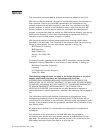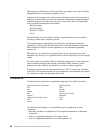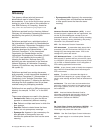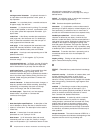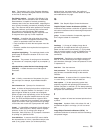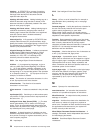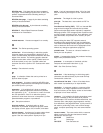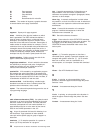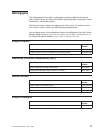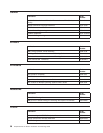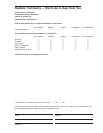indexing. In CRTAFPDTA, a process of matching
reference points within a file and creating structured
field tags within the MO:DCA document and the
separate index object file.
indexing with data values. Adding indexing tags to a
MO:DCA document using data that is already in the
document and that is consistently located in the same
place in each group of pages.
indexing with literal values. Adding indexing tags to
a MO:DCA document by assigning literal values as
indexing tags, because the document is not organized
such that common data is located consistently
throughout the document.
index object file. A file created by CRTAFPDTA that
contains Index Element (IEL) structured fields, which
identify the location of the tagged groups in the AFP file.
The indexing tags are contained in the Tagged Logical
Element (TLE) structured fields.
Infoprint Manager for iSeries. A software component
of IBM Infoprint. IBM Infoprint Manager for iSeries
handles the scheduling, archiving, retrieving, and
assembly of a PCL, PDF, or PostScript to AFP
transform job and its related resource files.
IOCA. See Image Object Content Architecture.
initialize. (1) In programming languages, to give a
value to a data object at the beginning of its lifetime.
(I) (2) To set counters, switches, addresses, or the
contents of storage to zero or other starting values at
the beginning of, or at prescribed points in the operation
of, a computer routine. (A) (3) To prepare for use; for
example, to initialize a diskette.
inline. The direction of successive characters in a line
of text. Synonymous with inline direction.
inline direction. The direction of successive
characters in a line of text.
inline resource. A resource contained in the print data
set.
input/output (I/O). Pertaining to a device whose parts
can perform an input process and an output process at
the same time. (I)
Intelligent Printer Data Stream (IPDS). (1) The data
stream generated by PSF to send to an IPDS page
printer. (2) An all-points-addressable data stream that
enables users to position text, images, and graphics at
any defined point on a printed page.
interface. A shared boundary. An interface can be a
hardware component used to link two devices, or it can
be a portion of storage or registers accessed by two or
more computer programs.
I/O. Input/output.
IPDS. See Intelligent Printer Data Stream.
L
library. A file or a set of related files, for example, a
page definition library containing one or more page
definition files.
licensed program. A utility that performs a function for
the user and usually interacts with and relies upon
system control programming or some other
IBM-provided control program. A licensed program
contains logic related to the user’s data and is usable or
adaptable to meet specific requirements.
line data. Data prepared for printing on a line printer
such as an IBM 3800 Printing Subsystem Model 1. Line
data is usually characterized by carriage control
characters and table reference characters. Contrast with
MO:DCA-P. It is externally formatted with page
definitions and form definitions.
line printer. A device that prints a line of characters as
a unit. (I) (A) Contrast with page printer.
logical page. A presentation space. One or more
object areas or data blocks can be mapped to a logical
page. A logical page is rectangular and has specifiable
characteristics such as size, shape, orientation, and
offset. Orientation and offset are specified relative to a
coordinate system for the medium.
logical page origin. (1) The point on the logical page
from which the positions of images, graphics, page
overlays, and text with 0-degree inline direction are
measured. (2) The point on the logical page
represented by Xp=0, Yp=0 in the Xp coordinate
system.
M
macro. Synonym for macroinstruction.
macroinstruction. An instruction that causes the
execution of a predefined sequence of instructions.
Microfilm device. An output device that presents a
hardcopy on microfilm.
migration. Activities that relate to the installation of a
new version or release of a program to replace an
earlier level. Completion of these activities ensures that
the applications and resources on your system will
function correctly at the new level.
Mixed Object Document Content Architecture. A
strategic, architected, device-independent data stream
for interchanging documents.
MO:DCA. See Mixed Object Document Content
Architecture.
34 Infoprint Server for iSeries: Introduction and Planning Guide




